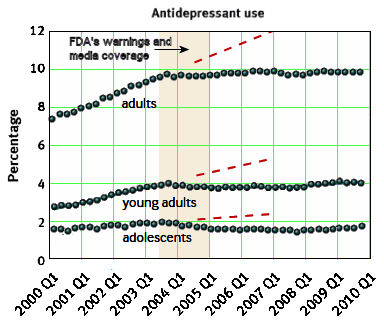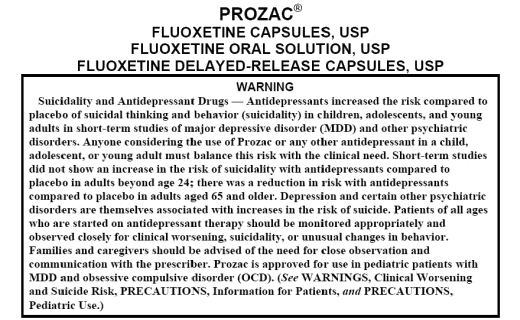New York Timesby Richard A. FriedmanAUGUST 3, 2015Is our culture of relentless achievement and success driving our young people to suicide? You would certainly think so, given the prevailing narrative in the media about the recent spate of suicides on college campuses: one high-achieving student after another succumbing to the toxic social pressure for perfection. It’s a plausible but incomplete explanation. No doubt the intense social pressure on young people, especially girls and young women, is daunting, but stress is only part of the story: We should also focus on adolescent mental illness and its treatment.
At least 90 percent of people who commit suicide have a diagnosable and potentially treatable mental illness like depression, or alcohol or other drug abuse problems, often in combination. Suicide is the third leading cause of death among young people and has been rising since 2007. The unidentified killer in this story is untreated psychiatric illness. In 2013, for example, 8.7 percent of people between the ages of 18 and 25 experienced a major depression episode in the previous year, but only half of them received any psychiatric treatment, according to the National Survey on Drug Use and Health. And in 57 percent of these episodes, patients were seen by a general practitioner or family doctor — neither of whom is typically an expert in the treatment of mental illness.
Worse, antidepressants, which can be lifesaving, are probably being underused in young people. Their use fell significantly after the Food and Drug Administration issued its so-called black-box warning in 2004, stating that all antidepressants were associated with a risk of increased suicidal feeling, thinking and behavior in adolescents. That warning was later extended to young adults. One very large study, including 1.1 million adolescents and 1.4 million young adults, examined data for automated health care claims for 2000 to 2010 from 11 health plans in the United States Mental Health Research Network. Disturbingly, the study found that antidepressant use plunged 31 percent among adolescents and 24 percent among young adults within two years after the F.D.A. advisory was issued…
Since there is no evidence that the F.D.A. black-box warning has been helpful, and there is a very reasonable possibility that it has discouraged patients from taking antidepressants and physicians from prescribing these medications, the government should rescind the black-box warning on antidepressants altogether. Parents and teenagers, and their doctors, too, should not be afraid of antidepressants and should know that they can be very helpful. Indeed, with careful use and monitoring, they can be lifesaving. The only thing we should all fear is depression, a natural killer that we can effectively treat.
The unidentified killer in this story is untreated psychiatric illness. In 2013, for example, 8.7 percent of people between the ages of 18 and 25 experienced a major depression episode in the previous year, but only half of them received any psychiatric treatment, according to the National Survey on Drug Use and Health.

Cochrane Systematic Reviewsby Sarah E Hetrick, Joanne E McKenzie, Georgina R Cox, Magenta B Simmons, and Sally N Merry14 NOV 2012… Based on 14 of the trials [2490 participants in total], there was evidence that those treated with an antidepressant had lower depression severity scores than those on placebo, however, the size of this difference was small. Based on 17 trials [3229 participants in total], there was evidence of an increased risk [64%] of suicide-related outcomes for those on antidepressants compared with those given placebo…

Since there is no evidence that the F.D.A. black-box warning has been helpful, and there is a very reasonable possibility that it has discouraged patients from taking antidepressants and physicians from prescribing these medications, the government should rescind the black-box warning on antidepressants altogether.
After the big Prozac study of treating depression in adolescents appeared in 2004, I ran a back-of-the envelope estimate of risks and harms. For the hard outcome of completed suicide, the data suggested equipoise: any suicides prevented by treating depressed adolescents with fluoxetine would be offset by about the same number of suicides provoked by the drug. So, as you point out, the NYT author Friedman goes beyond the data in asserting that untreated mental illness is the real culprit. Besides, where are the data on efficacy of current antidepressants in preventing suicide in dysphoric adolescents with alcohol or drug abuse problems or in those with first-episode psychotic breaks or in those with many forms of co-morbidity?
So, Friedman’s hortative message turns out to be just hand waving – well intentioned, no doubt, but hand waving nonetheless.
The irony will be WHEN a family member sues a psychiatrist for NOT prescribing meds after a teen/young adult commits suicide, and the provider tries to use the black box warning as a defense.
Damned if you do, damned if you don’t. Oh, and don’t wait for the antipsychiatry crowd to chime in basically saying patients should be abandoned in the first place, as just breathing oxygen and ingesting a reasonable amount of glucose and protein will save society, if they even admit there are some who have depression as a quantifiable disorder.
Sheesh…..
1. I wrote to NEJM last month about two mistakes in Friedman’s 2014 piece, in a paragraph he copied and pasted into an NYT Q&A after Germanwings.
This is wrong:
“the rate of suicidal thinking or suicidal behavior was 4% among patients assigned to receive an antidepressant, as compared with 2% among those assigned to receive placebo,1 although none of the suicide attempts documented in the trials were fatal.”
There were 8 completed suicides, 5 on drug and 3 on placebo.
He was reporting the findings of Stone, et al., 2009. In NEJM the reference was wrong, and in NYT he didn’t give one. (It’s http://www.bmj.com/content/339/bmj.b2880)
2. I wrote to NYT at the same time, and they have since fixed it, and added a link to Stone at BMJ:
“the rate of suicidal thinking or suicidal behavior was 4 percent among patients assigned to receive an antidepressant compared with 2 percent among those assigned to receive placebo. There were eight fatalities from suicide overall in the adult trials and there was no increased risk of suicidal behavior when analyses were pooled among adults”
http://well.blogs.nytimes.com/2015/03/30/ask-well-depression-and-its-risks/
NYT added:
Correction: August 4, 2015
An earlier version of one of the answers in this post referred incorrectly to the number of documented completed suicides there were in an analysis of clinical trials of antidepressants. There were eight completed suicides among adult patients; it is not the case there were none. (In a smaller study of pediatric patients none of the suicide attempts were fatal.) A reader pointed out the error last week.
Should add: “She also pointed it out to Well in April.”
3. I saw two of Yu’s BMJ charts in a WaPo article last year, and wrote (and deleted) a post about them.
“There were 89 comments on [the WaPo] article. No one mentioned that the graphs, which were meant to show antidepressant prescribing declining after 2004 and suicidal behavior rising show something else.”
I cannot fathom why the NYTimes keeps publishing Friedman.